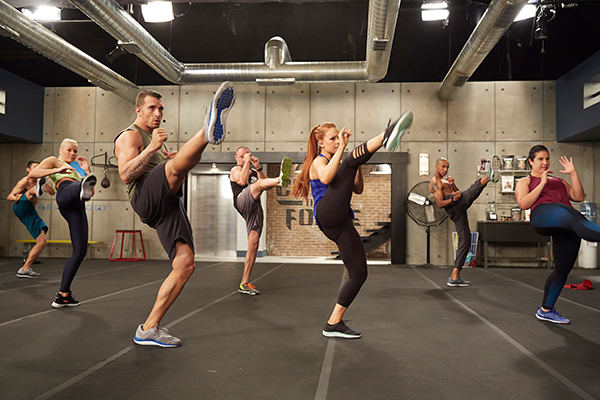Everything You Need to Know About HIIT Workouts
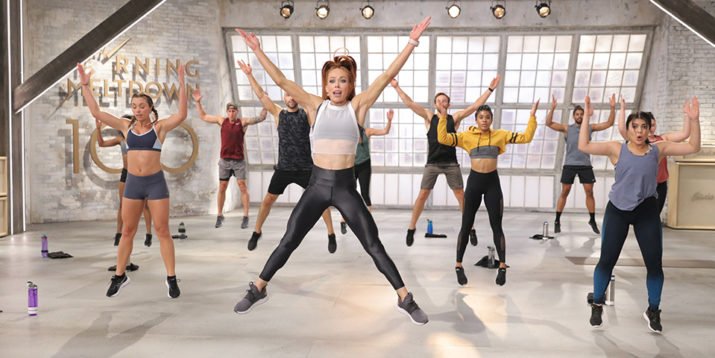
The fitness world is filled with trendy buzzwords, the most fashionable of which in recent years is probably “HIIT,” or “high-intensity interval training.”
But the concepts behind HIIT aren’t particularly new or trendy. They’re grounded in science and research, and they were around long before the snappy acronym.
That’s why they’re found in so many programs on BODi like INSANITY, 21 Day Fix, LIIFT4, Morning Meltdown 100, and Job 1.
What Is High-Intensity Interval Training?
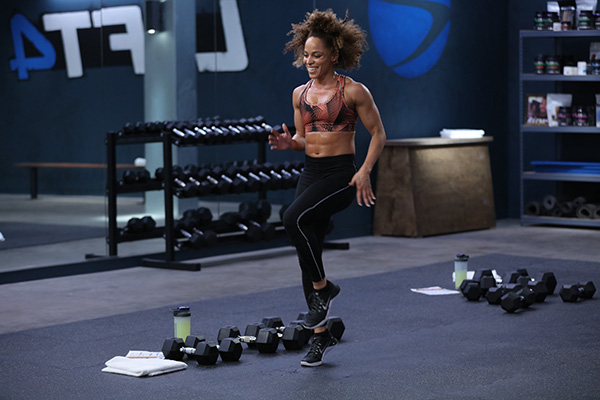
HIIT is any exercise style in which you alternate between short bursts of intense work (reaching 80 to 90 percent of your maximum heart rate) and brief periods of recovery.
Of course, both “work” and “recovery” are relative to you and your fitness level.
“There’s no ‘best’ formula for HIIT,” says Trevor Thieme, C.S.C.S. “The work-to-rest ratio depends on the activity, your fitness level, and your fitness goals.”
In general, though, you want to work at an intensity that doesn’t feel sustainable for very long. If you can speak even in short sentences during a work interval, you need to ramp it up.
And you want to work for a specified amount of time — usually somewhere between 10 seconds and a couple of minutes — that pretty much empties your tank.
Traditionally, HIIT was accomplished via aerobic exercise, but these days people are incorporating myriad modalities into their HIIT routines. From traditional cardio (e.g. sprints on a bike or treadmill or rowing) to strength training (e.g. kettlebell swings, dumbbell thrusters, jump squats), routines are being structured in a variety of ways.
“HIIT can take many forms, and all of them can advance just about any goal,” Thieme says. So, whether your goal is fitness, fat loss, muscle, or strength, HIIT can help you achieve it.
Recovery intervals typically involve a cool-down of low-intensity activity (e.g., walking or jogging), the goal being to rest just long enough to bring your heart rate down and allow you to maintain a high level of performance during the work intervals.
Here are six benefits of high-intensity interval training you need to know.
Benefits of HIIT Workouts
High-intensity interval training takes your jogging routine and puts it on steroids in a microwave.
1. Fat burn
HIIT is also a great exercise option for fat loss — provided it’s paired with a healthy diet, of course.
In fact, one study in the International Journal of Obesity found that young women who did HIIT three times per week for 15 weeks lost as much as seven pounds of fat. Their steady-state cardio counterparts, on the other hand, gained as much as three pounds of fat in the same amount of time.
That’s because while increasing intensity is a great way to burn more calories during your workout, it can also help you burn more calories afterward.
This “afterburn effect” is known as excess post-exercise oxygen consumption (EPOC), and it’s a measure of your body’s increased calorie consumption post-workout as it goes about the repair, recovery, and adaptation processes.
Generally speaking, the harder you work out, the higher your EPOC will be. That’s why a relatively short HIIT workout can ultimately burn as much (or more) calories than a longer steady-state cardio workout.
Still, when doing HIIT for fat loss, it’s important to remember that a boost in EPOC is only temporary, and studies disagree on exactly how long it lasts.
2. Improved VO2 max
High-intensity interval training is a great way to improve cardiorespiratory performance, says Justin Kompf, C.S.C.S., owner of First Guess Fitness, adding that it can be especially effective at helping you improve your VO2 max (i.e., the maximum amount of oxygen your body can utilize during intense exercise).
So, for endurance runners, sprint intervals can help them increase the volume of oxygen they can consume and utilize, which enables them to run faster and longer before fatiguing.
HIIT can also help improve running economy (how efficiently you use oxygen to sustain a pace), according to research published in the Brazilian Journal of Medical and Biological Research. If you’re a runner, you might be interested to know that variations in running economy likely account for the differences in race times between runners of similar abilities and VO2 max levels, according to a study in Medicine & Science in Sports & Exercise.
For the greatest VO2 max benefits, research suggests that HIIT workouts with three- to five-minute work periods might be your best bet.
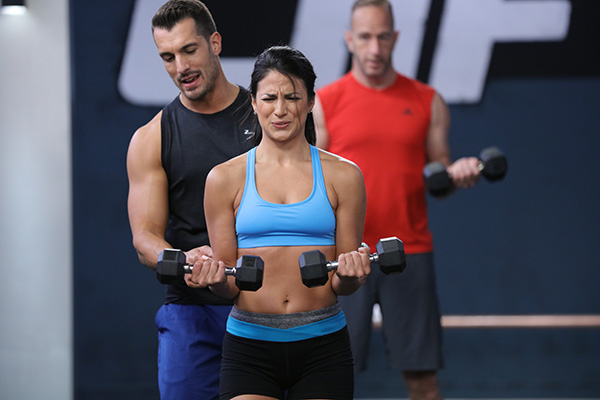
3. Muscle gain
You can add muscle strength to the list of high-intensity interval training benefits.
In a University of North Carolina study, participants significantly increased muscle size in just three weeks of high-intensity interval training. That’s because HIIT emphasizes your type II muscle fibers — the same ones you target when you lift weights.
So, if you incorporate strength-based moves into your HIIT routine (ex. squats, lunges, dumbbell thrusters, push-ups, pull-ups), you can add muscle while developing strength, power, and muscular endurance, Thieme says. Oh, and you’ll reap HIIT’s other benefits — like fat loss and fitness — at the same time.
4. Healthy aging
High-intensity interval training can also improve age-related decline in muscle mitochondrial function, according to a recent study in Cell Metabolism.
For all the non-scientists out there, mitochondria are structures in our body’s cells that perform several essential functions, one of which is to act as a “power plant.”
Mitochondria convert nutrients into a form of energy that cells can use to keep our bodies in good working shape.
Researchers explain that declines in mitochondrial capacity are a significant factor in the development of symptoms that we commonly associate with aging, such as wrinkles, frailty, chronic diseases, and overall poor health.
In the study, both cardio-based HIIT and HIIT combined with strength training packed similar healthy-aging benefits.
5. Convenience
And here’s the kicker — HIIT scores you the benefits mentioned above in far less time than other types of exercise. So if you struggle to find an hour every day for the gym, maybe 15 to 30 minutes of HIIT are more feasible.
Research actually shows that a 10-minute HIIT workout packs cardiovascular benefits similar to a 50-minute sweat session.
And a landmark Japanese study conducted in 1996 (now known as the “Tabata study”) found that performing five days of HIIT per week was a better method for improving both aerobic and anaerobic fitness than doing five days of moderate-intensity cardio per week.
Researchers noted this dual improvement is likely due to the fact that HIIT manages to challenge both the aerobic and the anaerobic systems in a single session.
Plus, while federal guidelines recommend people perform 150 minutes per week of moderate exercise, they also state that if you up the intensity, 75 minutes per week can do the job.
While a few kettlebells or dumbbells will definitely expand the number of exercises available to you, your body weight alone provides incredibly effective resistance.
HIIT Variations
There are many ways to structure HIIT workouts. While there is no single “best HIIT interval,” these are the most popular types.
1. Tabata
If you’ve heard of HIIT, you’ve likely heard of Tabata training.
First popularized by a landmark study in Japan and named for its lead researcher, Tabata workouts are among the quickest forms of HIIT, requiring only four minutes of actual work. The brevity of the workout also means it’s designed to be in-tense.
To do a Tabata workout, choose one cardio-focused exercise (ex. sprints, mountain climbers, burpees) and do it as many times as you can, as quickly as you can, for 20 seconds. Rest 10 seconds and repeat for a total of eight rounds.
2. Every minute on the minute (EMOM)
You’ll want an interval timer on hand for an EMOM workout. Set it for a certain length of time (ex. 10 minutes) and program it to signal the end of each minute.
Why? Because you’ll take one full-body exercise (ex. kettlebell swings, dumbbell thrusters, medicine ball slams) and perform a set number of reps (ex. 10) at the top of every minute. Then, you’ll rest the remainder of the minute. Repeat until your timer runs out.
3. As many rounds/reps as possible (AMRAP)
An AMRAP workout is a race against the clock. In this approach to HIIT, you complete as many rounds or reps of a given exercise (or set of exercises) as you can within a specific timeframe, resting as needed.
Tabata is an example of how you might structure an AMRAP workout for a single exercise, performing as many reps as possible during each work period. Alternatively, if you’re doing a circuit (e.g., 10 reps each of the bodyweight squat, chin-up, push-up, and McGill curl-up), you might try to perform that circuit as many times as possible in, say, 15 minutes.
4. Sprint interval training (SIT)
Sprint interval training, or SIT, is an advanced form of HIIT. Whereas HIIT is performed at 80 to 90 percent of your maximum intensity, SIT is an all-out effort. Work intervals can last anywhere between eight and 60 seconds, and are followed by recovery periods that can last between 12 seconds and four minutes. SIT workouts are also typically limited to aerobic activities.
Who Should Do HIIT?
“HIIT is an advanced form of training that requires a solid fitness foundation,” Thieme says. So if you’re new to exercise, you should take some time to work on increasing physical activity through cardiovascular exercise and strength training before trying HIIT.
And if you plan to add strength exercises to your HIIT sessions, make sure you have proper form down pat. Assuming you’re good to go, HIIT can be great for people looking to add a new challenge to their routine.
“Including HIIT adds variety to an exercise program, and HIIT has been reported to be more enjoyable than traditional endurance exercise for some people,” says Shelley Keating, Ph.D., researcher at the School of Human Movement and Nutrition Sciences at The University of Queensland, Australia.
Plus, lack of time is a common barrier that keeps many people from starting a regular exercise program. If you struggle to make time for traditional strength or cardio workouts, HIIT can offer a more time-efficient alternative.
“Low-volume HIIT programs allow you to perform a shorter session of exercise and gain the same or — for some health parameters, such as fitness — a superior benefit,” Keating notes.
Can You Do HIIT Every Day?
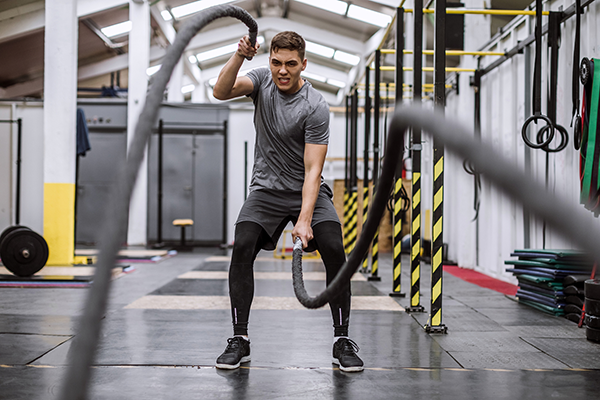
If a little bit of HIIT is good, more must be better, right? Not necessarily.
Unlike low-impact or steady-state exercise, HIIT requires sufficient time to recover between workouts. If not, you’ll not only compromise your body’s ability to recover from them, but also increase your risk of injury and burnout.
“It’s important to remember that adaptations to exercise — like muscle growth, increased endurance, fat loss, etc. — occur between workouts, not during them,” Thieme says. In order to optimize your benefits from HIIT, you have to give your body time to repair and grow stronger.
And keep in mind that if you’re new to HIIT, you might require more recovery time than someone who’s been doing it for awhile. We’re all different; the key is to figure out the frequency that works for you, Thieme says.
High-Intensity Interval Training on BODi
To be clear, HIIT isn’t generally something beginners should jump into right away. If you’re just beginning your fitness journey, work your way up to HIIT to avoid burnout and injury.
But once you’re ready for HIIT, you’ll find plenty of options on BODi, including these:
Transform :20
Is 20 minutes per day of exercise enough? It is with Transform :20, a high-intensity, six-week fitness program from Super Trainer Shaun T.
The only equipment you’ll need is a step — and no, this is nothing like old-school step class.
LIIFT4
An efficient four-days-a-week program, LIIFT4 combines classic weightlifting and calorie-burning high-intensity interval training.
Once you’ve graduated from Joel Freeman’s HIIT-and-lift classic, you’re ready for the sequel: LIIFT MORE. It’s everything people love about the original, only with a focus on more muscle, more days of lifting, and more moves for even bigger results.
Morning Meltdown 100
The 100 workouts in Jericho McMatthew’s program feature different types of training, including HIIT, cardio, strength training, mobility, and more.
Each workout is 20 to 30 minutes and is set to the beat of a live DJ to keep you motivated.
Sure Thing
This comprehensive 8-week program utilizes a science-based approach to fitness called “TYPE TRAINING™,” which alternates weekly between endurance and power-based strength training plus cardio conditioning to target both slow-twitch and fast-twitch muscle fibers.
CORE DE FORCE
In this MMA training-inspired program from Joel Freeman and Jericho McMatthews, you’ll punch, kick, and block your way through 30 days’ worth of sweat-drenching, high-intensity workouts.
INSANITY
The Shaun T program that helped popularize HIIT in the first place, INSANITY will test the limits of your endurance with extra-long work intervals and extra-short rest periods.
Foregoing weights in favor of bodyweight resistance, INSANITY workouts clock in at 40 to 60 minutes.
If you’re short on time, INSANITY MAX :30 limits each workout to 30 minutes.
For added muscle benefits, try INSANITY: THE ASYLUM VOLS. ONE and TWO. They require dumbbells, exercise bands, an agility ladder, and a speed rope.
P90X
Arguably the most widely known BODi program, P90X is all about high-intensity interval training workouts. Using both resistance and bodyweight training, it’s designed to help you burn fat and build muscle in 90 days.
Already tried it? Check out P90X2 and P90X3 to switch things up.
600 Secs
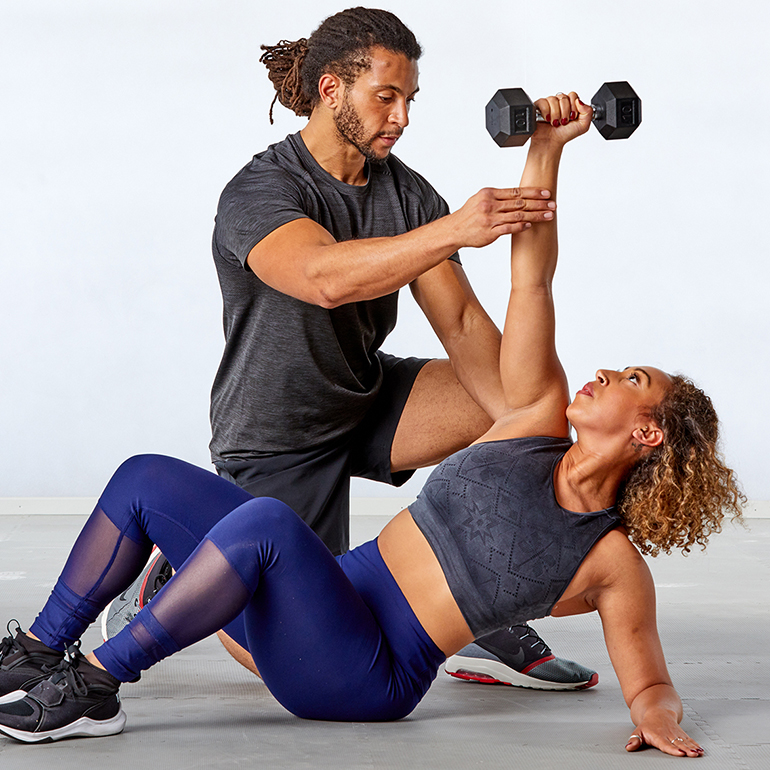
600 Secs features over 40 results-focused workouts — for abs, booty, legs, arms, core, resistance, cardio, and recovery – that clock it at just 10 minutes. Combine and stack them together to reach any goal.
TurboFire
Six days per week for 12 weeks, TurboFire rotates through 11 different high-intensity workouts, making you stronger, faster, and fitter every week.
Designed for intermediate exercisers, this program will take your total-body cardio conditioning to the next level.

